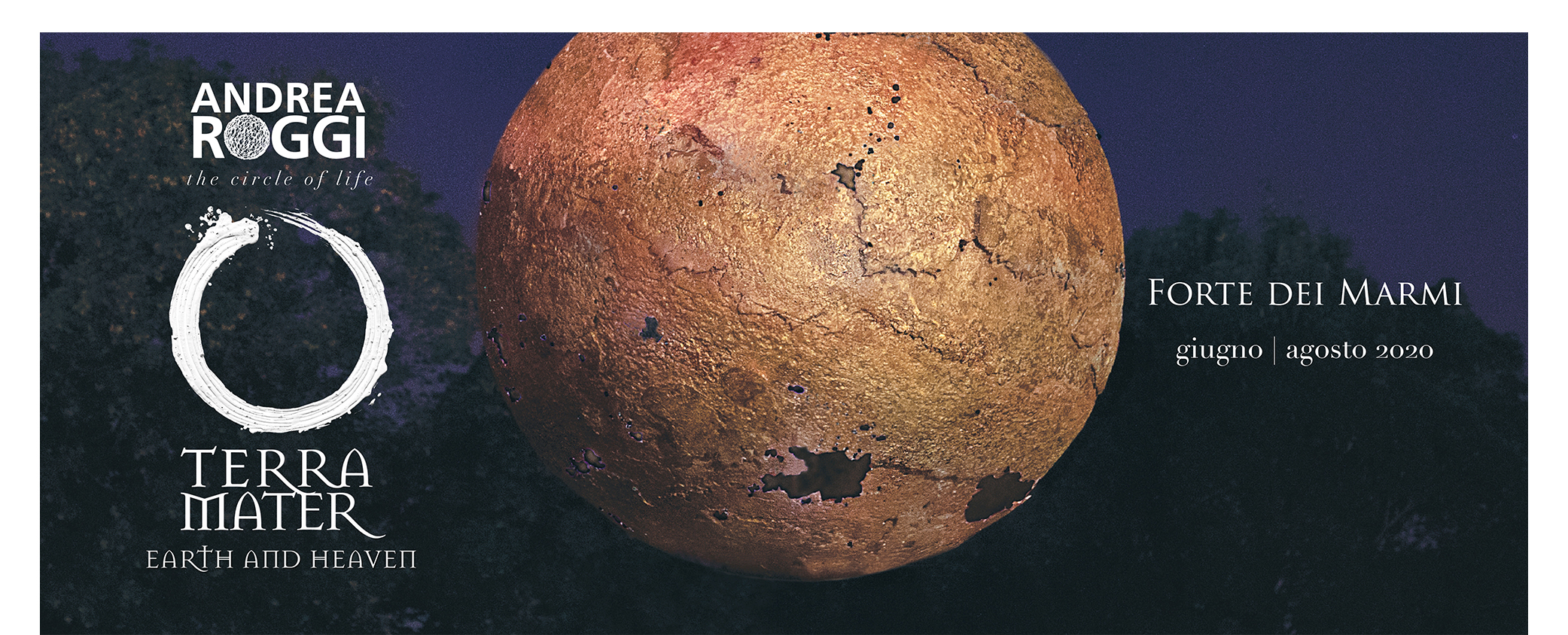
TERRA MATER
EARTH and HEAVEN
FORTE DEI MARMI
June - August 2020
Piazza Dante, Via Carducci, Via Mazzini and Via IV Novembre

"Roman divinity that clearly reveals itself as the result of secondary development, carried out in historical times and under the influence of Greek religious ideas, of the ancient Goddess Tellus.
This has only the character of an agrarian divinity, that is to say it is the Goddess of Vegetation, of Sowing and Crops, without any relation to the cult of the dead. [...]
Instead, the concept of the Terra Mater was formed in Rome only later.
The passage from Tellus to Terra Mater through Tellus mater is not sure, and certainly would not have occurred without Greek influences.
The Earth is now in relationship with the cult of the dead, and it is considered as a divine force that has in itself the seeds of life and death. [...]
It is not, however, like the Greek Gaea, the passive female element in contrast to the masculine active element of the sky (Uranus) or of the sea (Oceano); but it is the ground in its double meaning both of field of the harvest and place of burial. [...]
It is certain, however, that the ancient Goddess Tellus has now become Terra Mater and it represents the generating power of the soil, hence the life of plants and animals and the existence of men themselves”.
Franca Parise Badoni
Encyclopedia of Ancient Art (1966)
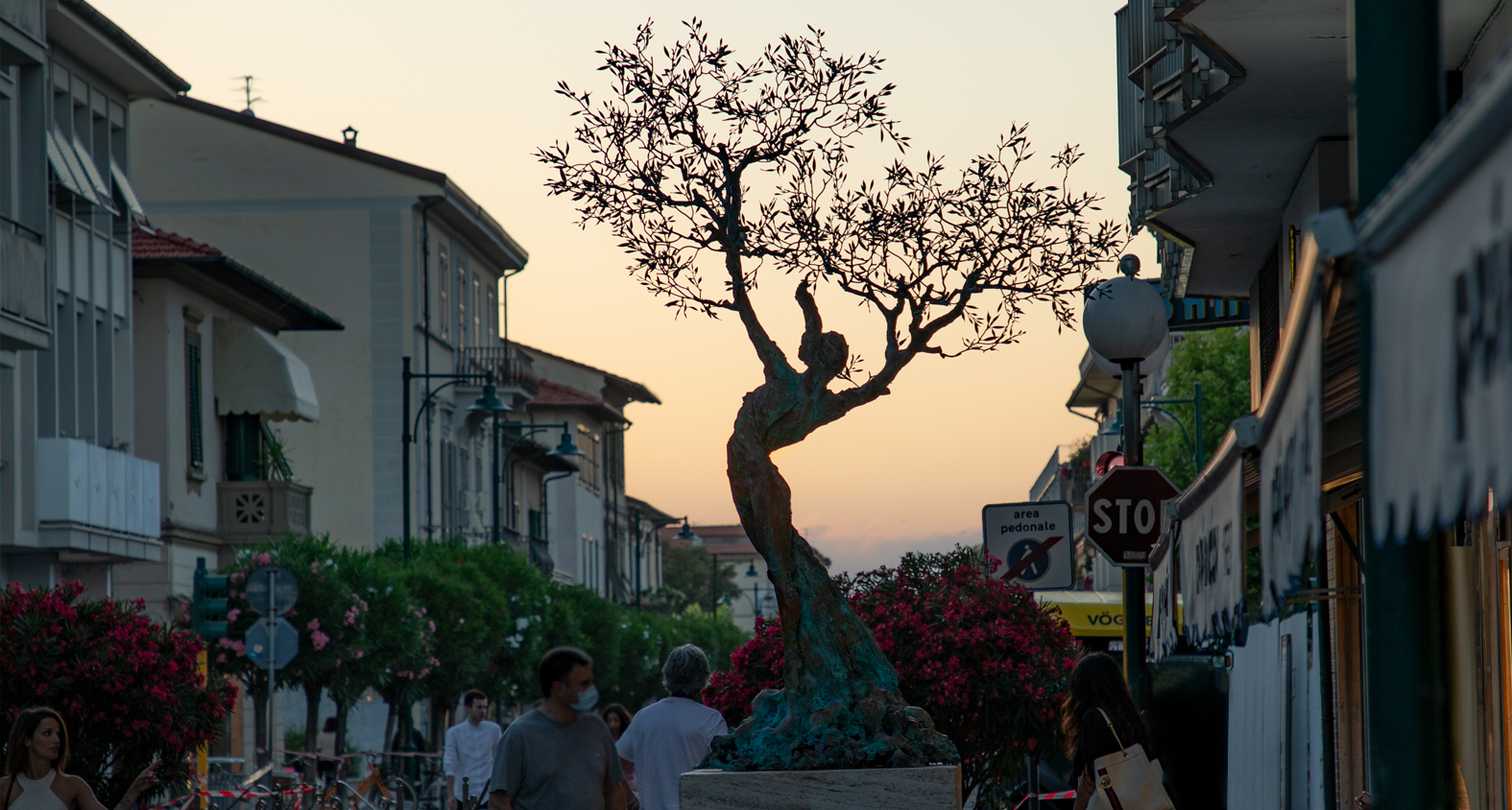
Following the great success of Terra Mater | Earth and Heaven, solo exhibition by renown Tuscan artist Andrea Roggi – which was held last year in the enchanting setting of the city of Lucca – the monumental bronze artworks by the artist will embellish the Versilia summer 2020 being the protagonists of an en plain air exposition in the historical centre of Forte dei Marmi.
Seven majestic works of art will accompany visitors on a path not only of aesthetic contemplation, but above all of profound intellectual reflection on those themes which are particularly dear to the artist: our relationship with nature — conceived as Mother Earth, a saving power to defend and protect —, the relationship with our cultural roots — memory and traditions that feed us hope for a better future — and the relationship with time, in its inexorable flow.
In an harmonious dialogue with the historical and social context of this Versilia town, Roggi's monumental sculptures are extremely refined structures which are capable of astonishing at a first glance for the great technical expertise combined with subjects oscillating between quivering figuration and spiritual and emotional trans-figuration, in perpetual exaltation of the power of the Terra Mater, common thread and title of the exhibition.
The recovery of a balance, the perception of a common sensitivity, the need to reverse the course of the phenomena, nowadays too rapid, in order to forge truer relationships between individuals and above all to find the awareness that each being bases its existence in the earth, in the encounter with a substrate that supports everything.
This is the reflection that Roggi proposes.
In this time marked by uncertainty and dilated as a result of the recent pandemic, Roggi's exhibition is, now more than ever, a strong symbol of hope, a warning to remind us that art and creativity can - and must - guide us towards a moral and intellectual rebirth.
The exhibition is organised under the patronage of the Municipality of Forte dei Marmi, the Province of Lucca and the Tuscany Region.


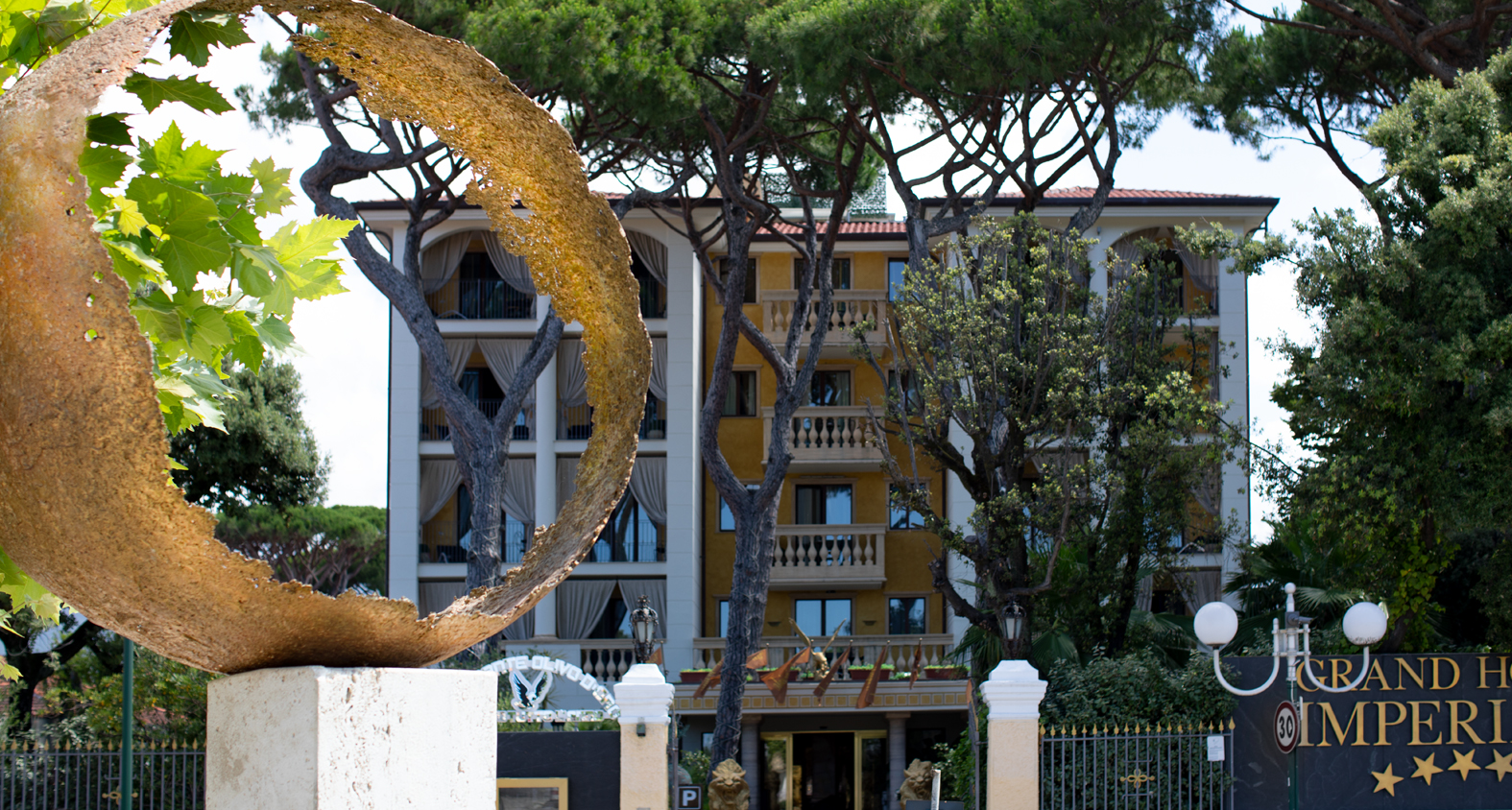
Terra Mater | Earth and Heaven
A wonderful Versilian stroll through the poetic work of Andrea Roggi
Only a sublime yet unique combination, like when the sea meets the mountains, could have brought about that pure white marble that only Michelangelo could dignify and transform into perfect artwork. Michelangelo managed to shape the pure heart of the Versilia mountains, indissolubly bound to those places as he was. Other artists reached those marble quarries after him to select raw material. Not only because of the undisputed beauty of the rock itself, but they also went there due to their desire to preserve their path of self-discovery and inspiration, just like their predecessor did.
More than half a millennium later, that feeble path indicated by Michelangelo – perhaps involuntarily – is still followed and extended by the art of those individuals who take inspiration and gain consolation among the rough walls of the Apuan Alps. Carlo Carrà, for instance, spent over forty summers in front of the Versilian sea which he immortalized through his oil-on-canvas paintings, a tool that always causes quite a stir.
Andrea Roggi has been fully and deeply aware of the conciliatory atmosphere of Versilia, so much so that he settled in Pietrasanta where he conceives and designs his sculptures, and also where he carves marble. The Maestro’s sketches, which are kept in his Versilian home, convey piece of mind and harmony: thought provoking drawings and ideas rendered into human forms that might soar high above or hug each other tenderly, dynamically evolving into flaming trees.
In a few words, Roggi's personal open-air exhibit named Terra Mater | Earth and Heaven, which took place at Forte dei Marmi during the summer of 2020, shall, to all intents and purposes, be considered a natural extension of the artistic experience that had begun some time ago in that very geographical area. Surely, the title of the initiative already gives away the matters that have always been dear to the Maestro, which gave him plenty of food for thought over the past few years. However, this temporary exhibition boasted various elements of innovation integrated into the theme of Mother Earth, through complex philosophical concepts and all but quantum intuitions.
The Mother Earth theme is based on the primary concept that every human being is someone’s son or daughter. Nature should be respected and preserved since it is the primordial sprout of life, here we find the leitmotif of the whole exhibit. However well Roggi may keep the environmental elements in his mind, his observations do not merely pivot on this matter. Rather, they entail an all-encompassing vision capable of including tradition in the proper sense of the term. Lest we forget the importance of self-identity and the bonds of affection rooted to the territory of belonging. Tradition, is in fact a noun that derives from the Latin verb trado, which branches off into several meanings. This word can surely mean "to pass on" but on the other hand, it could also take on different connotations such as "entrust" or "bequeath". In short, through paying his intimate tribute to Mother Earth, on one hand the Maestro is conveying the exigency of returning to love the planet that has nurtured mankind for millennia. On the other hand, he is also implying the urgency to regain control over what we have been given as a gift from past experience; so that is can be actively used to achieve a virtuous collective state of awareness and balance, almost the same way ancient Greek philosophers did.
The exhibit was opened by the work Continuum, that is an abstract sculpture whose shape resembles a circle of lava material made with a bronze casting technique, dynamic casting, designed by Roggi himself together with his team. As the title suggests, this work is a representation of a very precise time cycle that can be analyzed on multiple levels. Just as it symbolizes the cycle of life (of paramount importance to the artist, just think of the name of his art galleries, The Circle of Life) of each person, Continuum can also be easily interpreted as a masterful materialization of Nietzsche’s concept of eternal return. This indescribable work gifts our sight with such a sense of freedom and spatiality that, ultimately, it cannot be belittled to a single and limiting decoding of itself.
The sculptural path mapped out by Roggi continued with Tempus, another work that belongs to the Maestro's abstract style. Similar to impetuous astral cascade of molten metal that end its flow against a perfect golden sphere, the sculptor's hallmark, Tempus can be defined as universalization by Continuum. In this case, the work does not represent a segment of time, but instead it represents time itself. A titanic perceptive entity which escapes consciousness. Time escapes consciousness not so much for its zenonic non-speed, but for the fact that it may not exist: it could only be the result of a much necessary convention used to regulate people's social life. Thus, the abstractness of the work is absolutely instrumental to this obscure ambivalence. After all, it is downright capable of wisely combining the vibrant and massive material element like bronze, with the formal element, which is almost imperceptible and ephemeral, like the perception of time or the glimpse of a waterfall.
It is within the above-mentioned time frame that our Maestro's ideas relating to Terra Mater flourish. Actually, it is no coincidence that the exhibit continued with the emblematic work Fecunditas. This sculpture, which belongs to the production of the Trees of Life, represents the glad metamorphosis of a female figure into a shrub. The sculpture in question takes pride in its dense and organic symbolism: there is no doubt that fertility, seen as the shrub component, is directly bestowable to a maternal dimension mirrored by a graceful female subject. Nevertheless, no descriptive canons are ever limited to a mere modernization of the Great Neolithic Goddess, quite the contrary, they are usually expanded, so much so that they manage to reach significantly original nuances. A message oozes from Roggi’s works, a fertile mother is not one who biologically participates in efficient reproductive aptitudes. Far from it, she is the person who knows how to enter into symbiosis with the world, who is therefore able to pursue their dreams without losing sight of their human values such as kindness, sensitivity, reasoning and foresight. Fertility is awareness; sterility is obfuscation.
Love saves the World is the name of the following sculpture with which, once again, the artist proposed a turn from individuality towards universality. Even in this case, the theme can be traced back to that of the Tree of Life. However, in comparison with the previous creation, the distinctive element is the monumental sphere, with its oxide tones, that lays beneath lovers who turn into olive trees. The sculpture’s main essence is love, one that is suspended in a precise chronological moment where two lovers completed each other thanks to their own identity and culture baggage, these being mainly determined by Mother Earth and expressed by the roots of the tree. Golden fruits that hang from their branches represent hope in the future stems from their all but mystical connection. Mother Earth, powerful and solid, now turquoise like water, now scarlet like fire, supports the quintessential love of its protagonists, nevertheless it is they who manage to dominate its everlasting strength, elevating it to life. The Maestro's wish is therefore evident: love is the meaning of life, love together and unavoidably, this is the purpose of all humankind. It is an almost divine one, natural, spontaneous and yet, at times, so difficult that it seems degenerating.
By the Flamma Amoris sculpture, the dissertation around love reaches a clear conclusion. As in the two previous pieces of artwork, the protagonists are also two lovers about to transform; the plant in question, however, is not an olive tree but rather a cypress. The title comes from the clay-like nuances that the bronze has taken on, thanks to the fire patination process combined with the energetic movement of the cypress crown. This set of characteristics symbolizes the flame’s fervor. The couple is burning with passion and love, yet this blaze they spread is not linked to the shrub component of the tree as a destructive entity, on the contrary it is linked to it as a carrier of life. In this case, the fire is only pretextual in breaking down the old conception which dooms cypresses to the end of our journey. It rather aims to dignify it as a symbol of desire for light, of desire for paradise – the same paradise to which reference was made in the title of the exhibit. Of course, the tapered and sky-reaching shape of the cypress has determined its presence in the sepulchers. However, Roggi intends to recall that the paradise in question, (also known as the blue expanse from which a sublime evening breeze comes in Spring) is an integral part of the world. That is, a part of Mother Earth, and everyone should enjoy it for free, always.
Finally, the artistic promenade near Forte dei Marmi was completed with the monument entitled Imagine a New World. This work, a paradigm of the Imagine theme developed over the years by the Maestro, is made up of countless anthropomorphic subjects which, in contact with each other, make a perfect sphere. This sculpture was chosen without any doubt, as the end of the exhibit, since it is the banner of all the concepts expressed by Roggi. All in all, humankind perceives, thinks and experiences the same ones. Imagine a New World reminds all of us that the truth is that all knowledge and all phenomena take place in the mind of human beings who form a dense network that is called, more simply, "reality". In other words, the work in question offers a farewell to all onlookers, stating that all that human beings own are the human beings themselves, as indispensable fibers of an endless single fabric that remains intact thanks to the attachment that each component exercises towards the others.
Jacopo Bucciantini

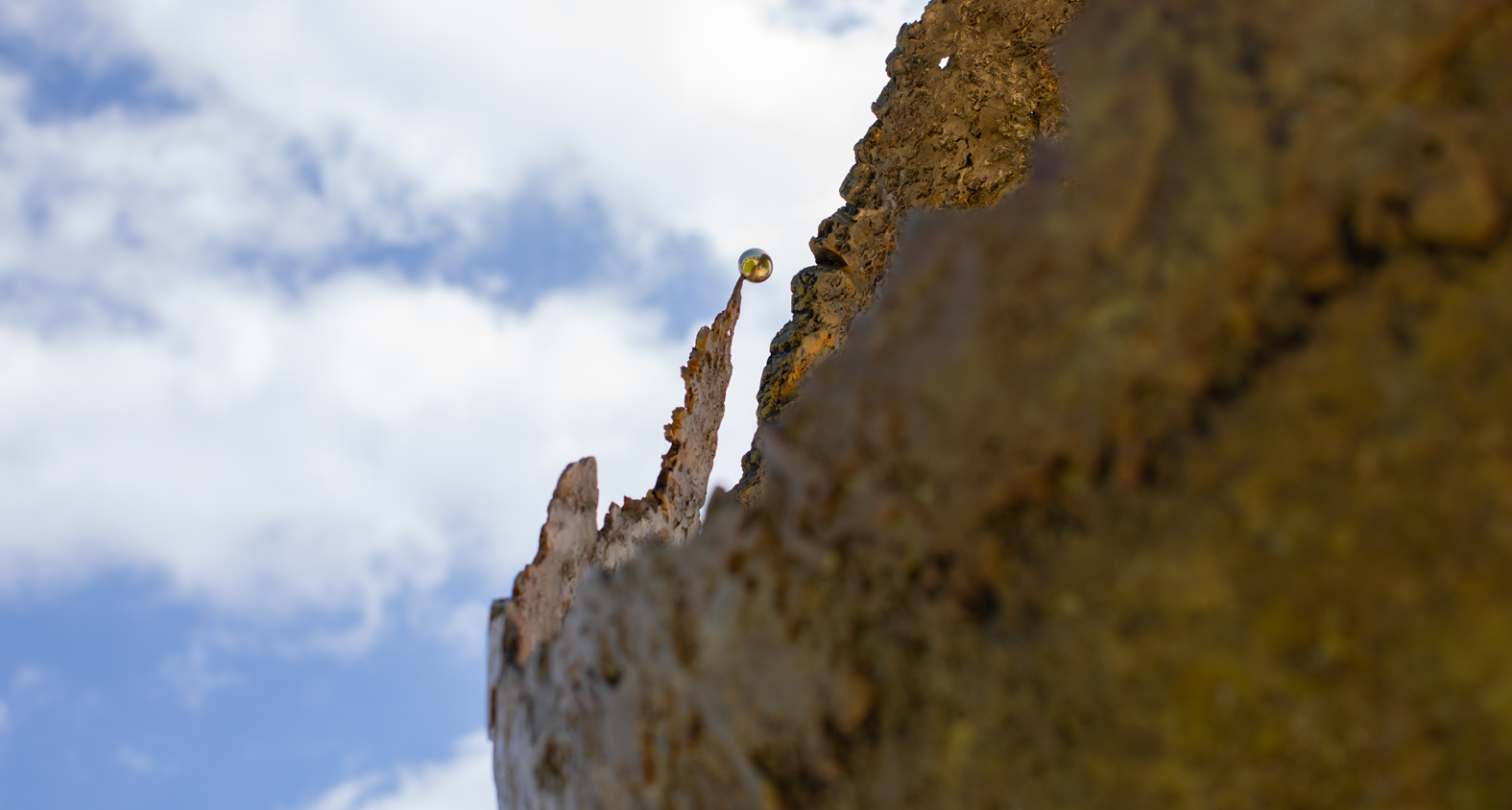
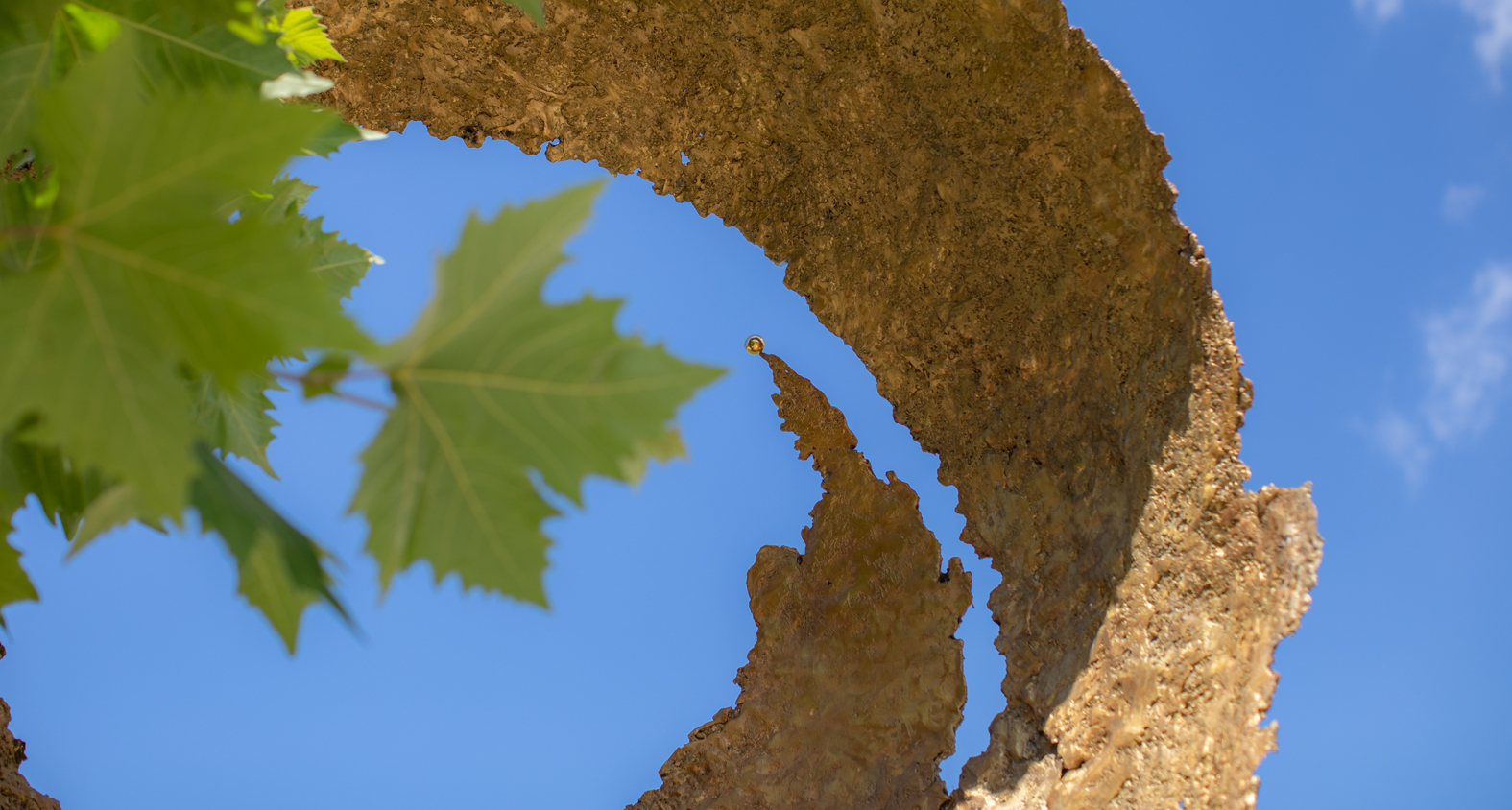


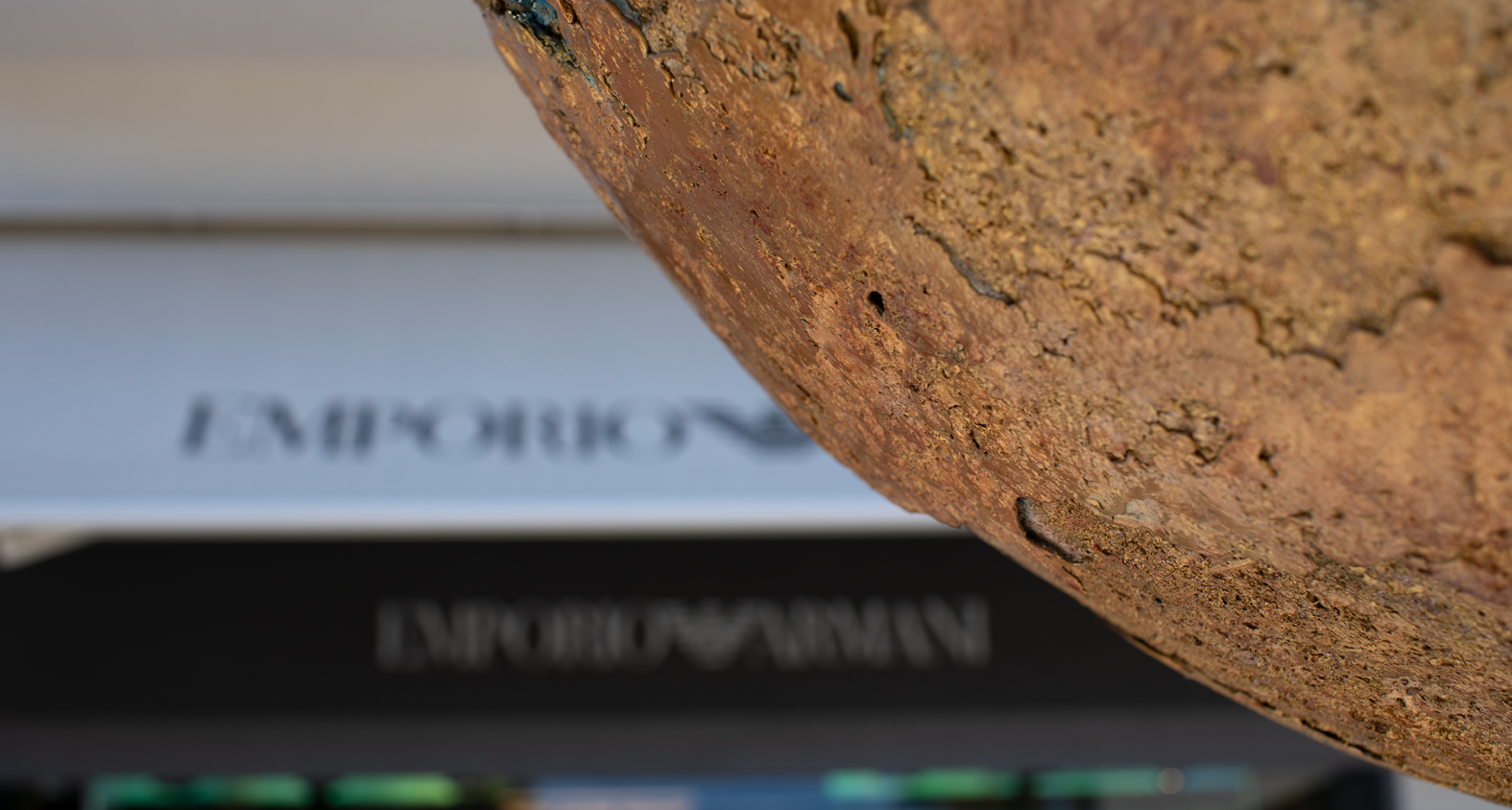
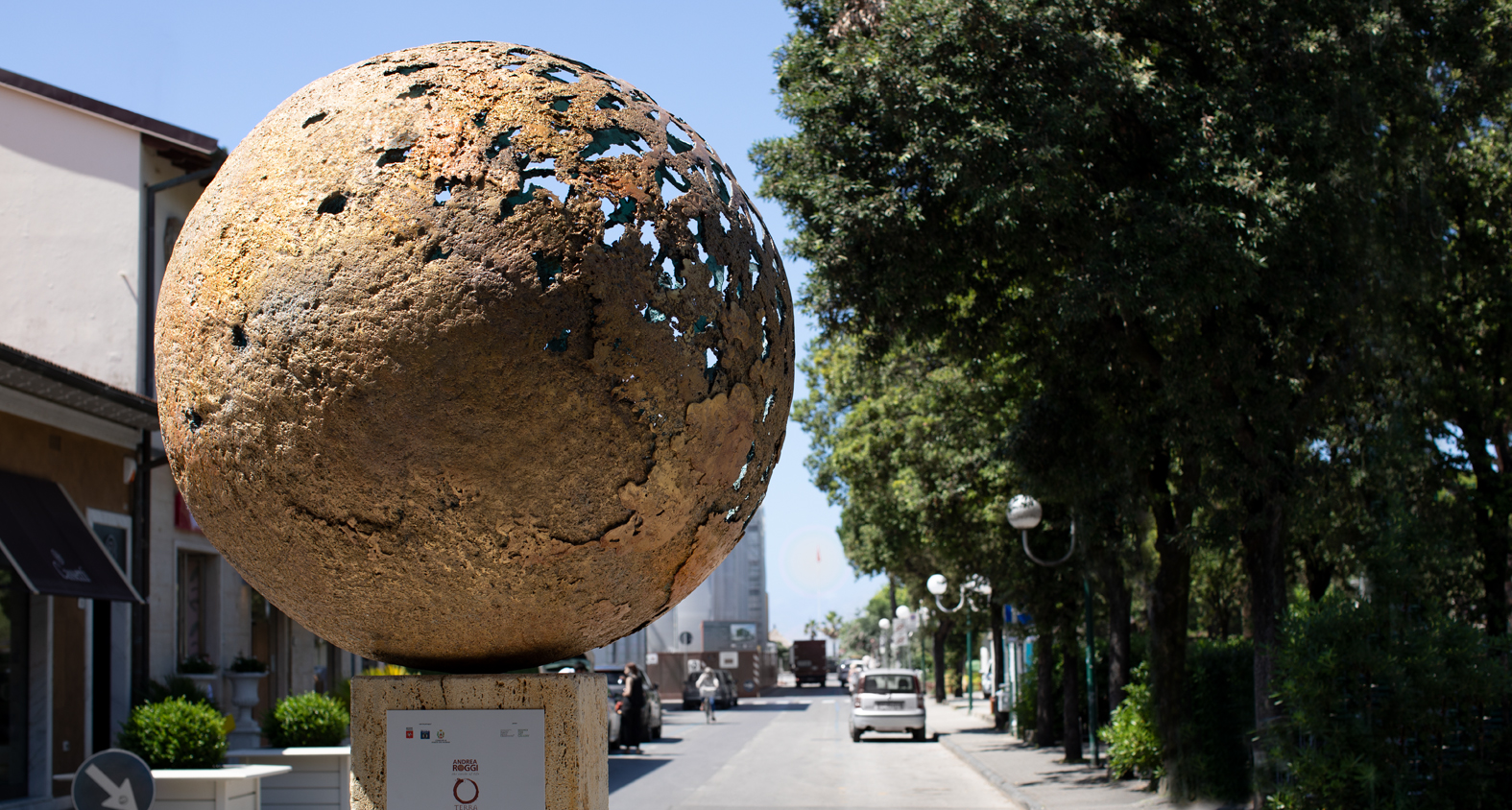
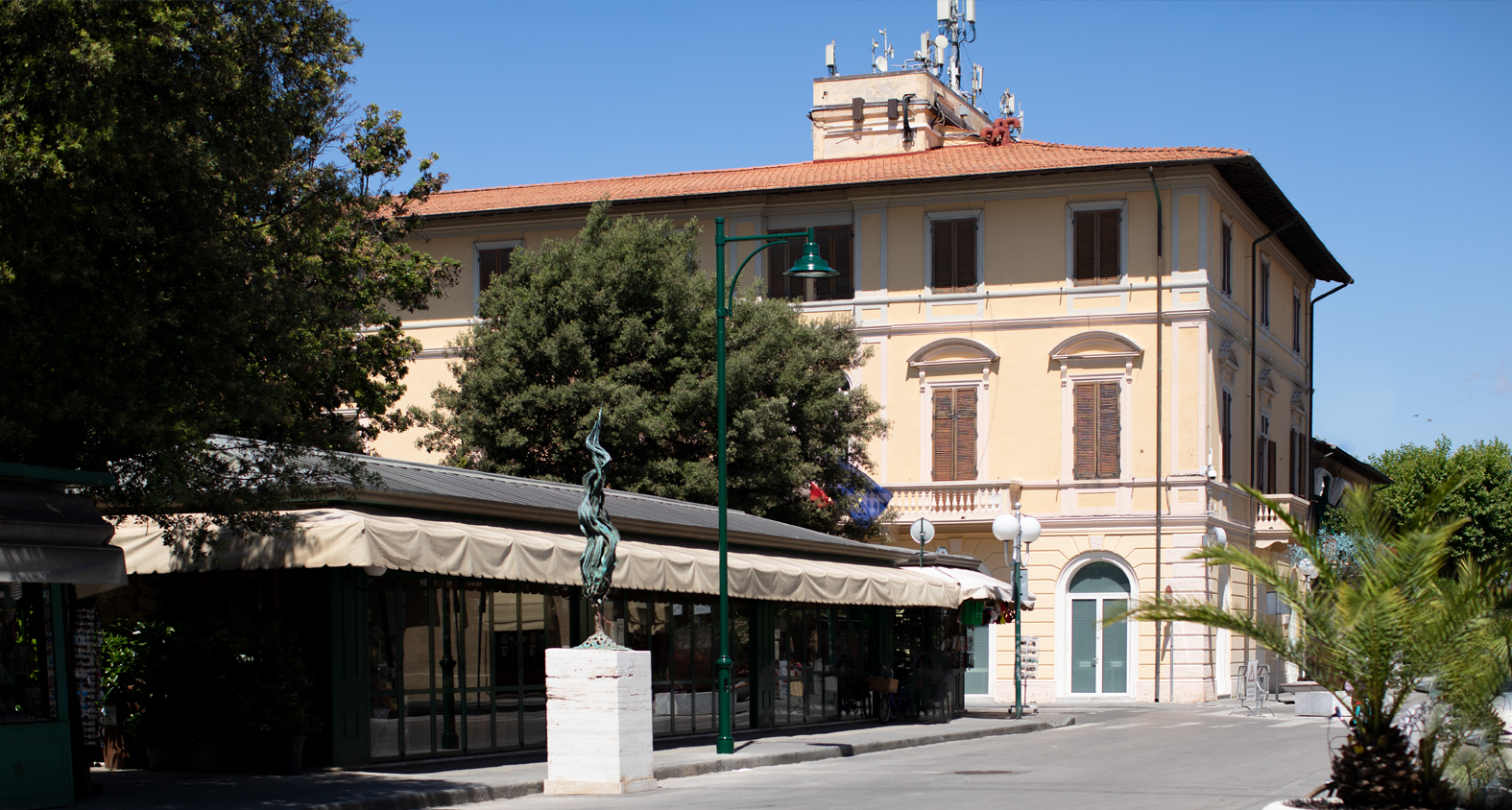
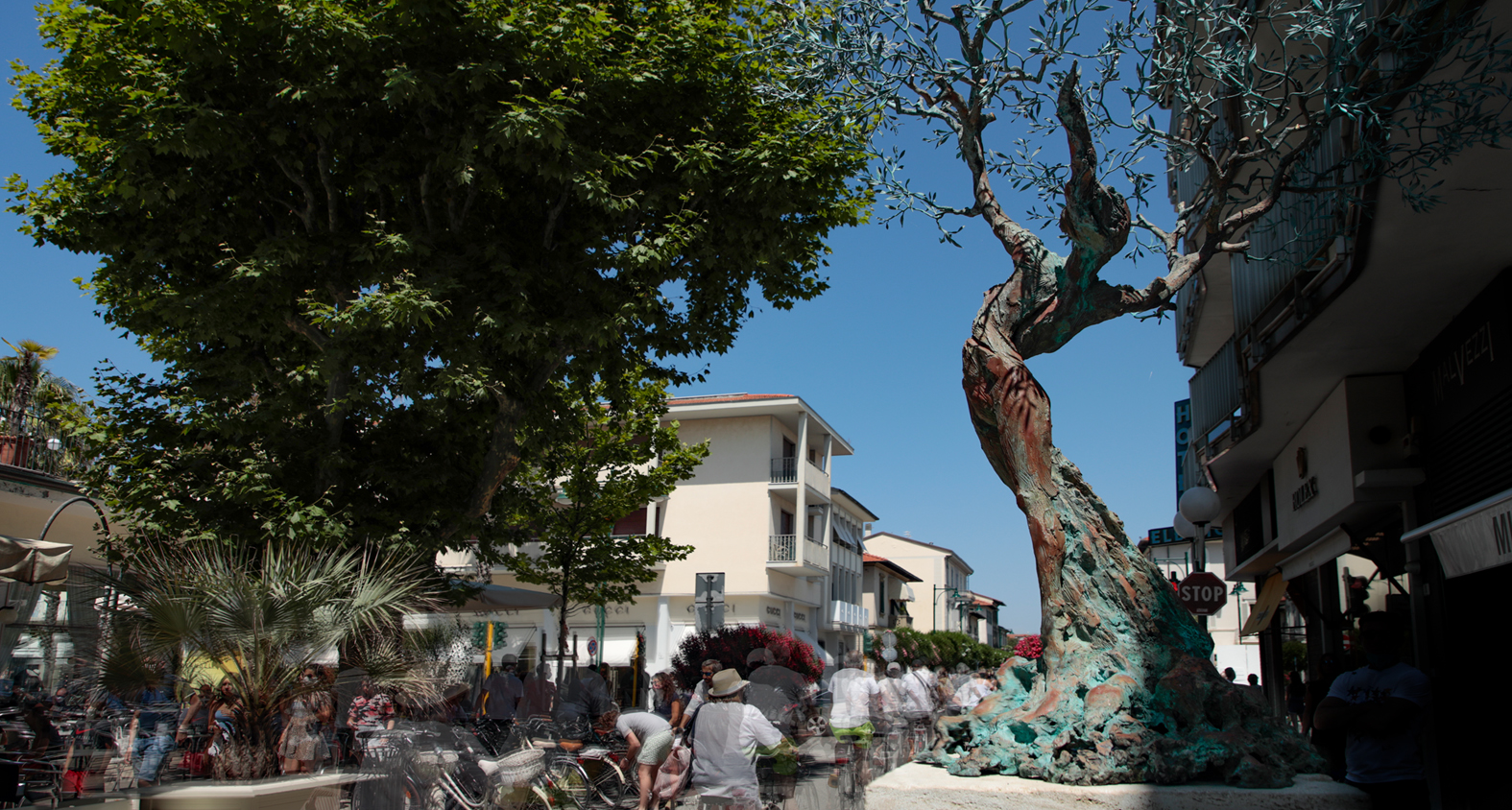

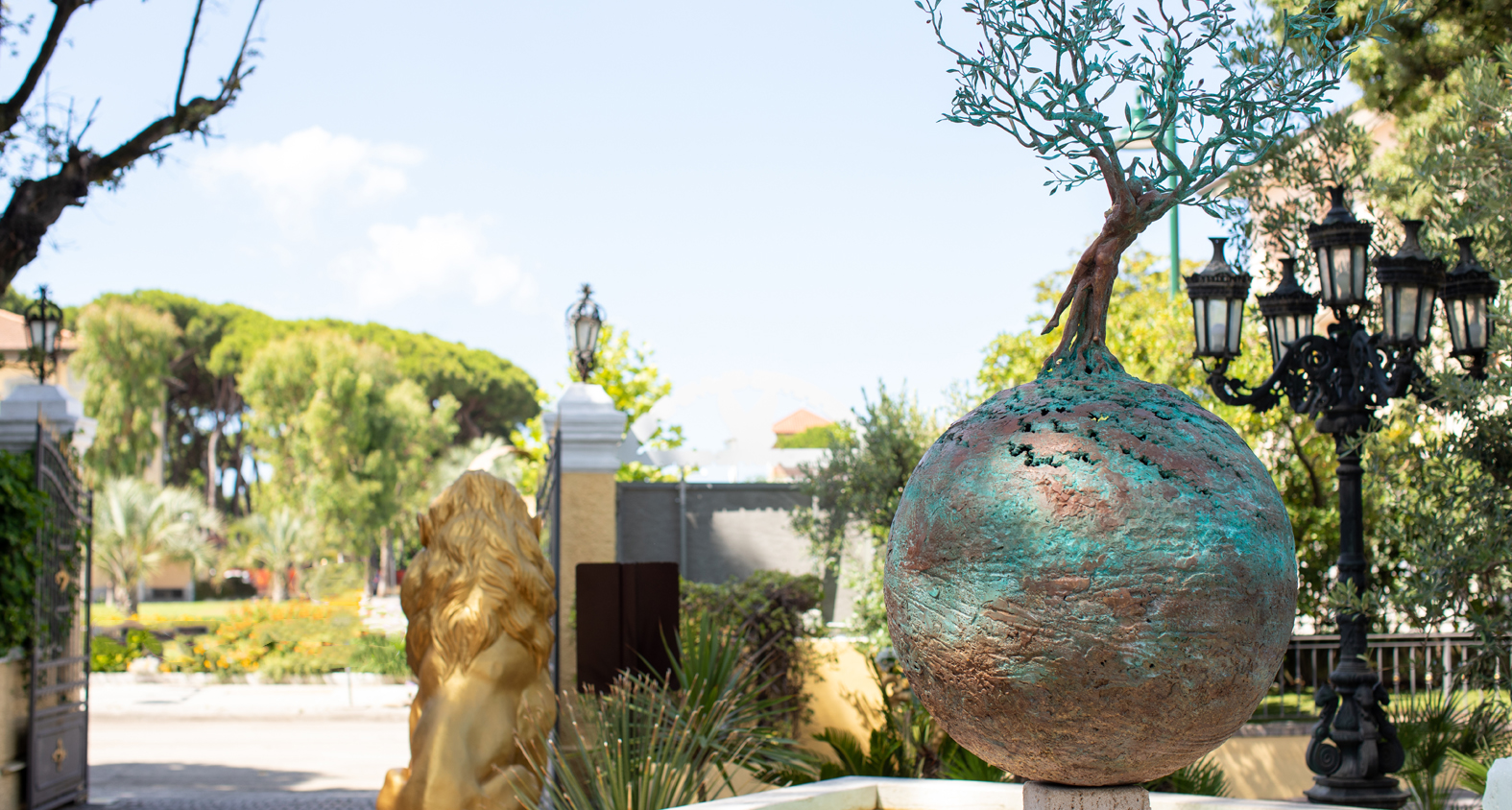

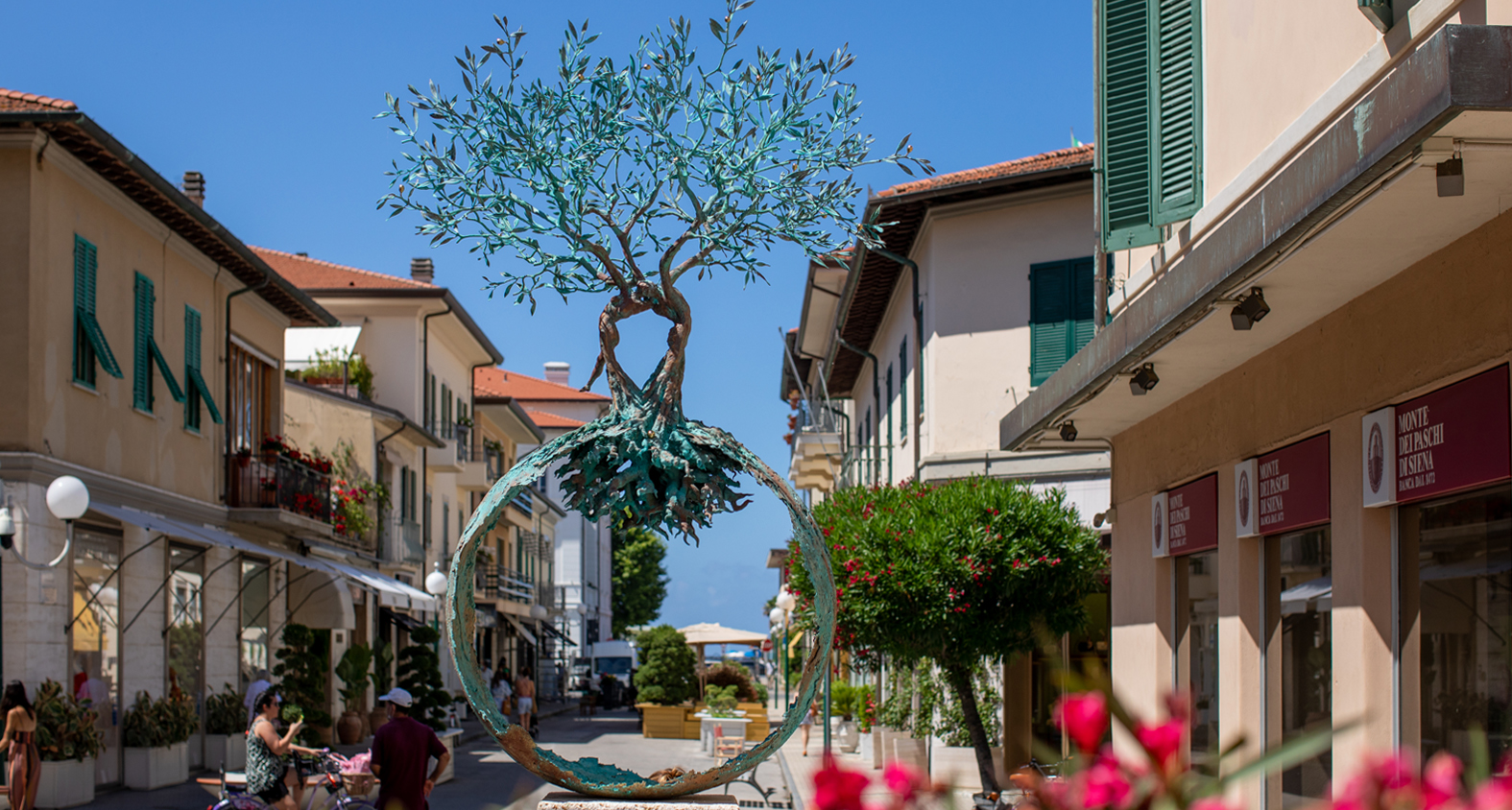
Paradise is under our feet
as well as on our heads
Henry David Thoreau
